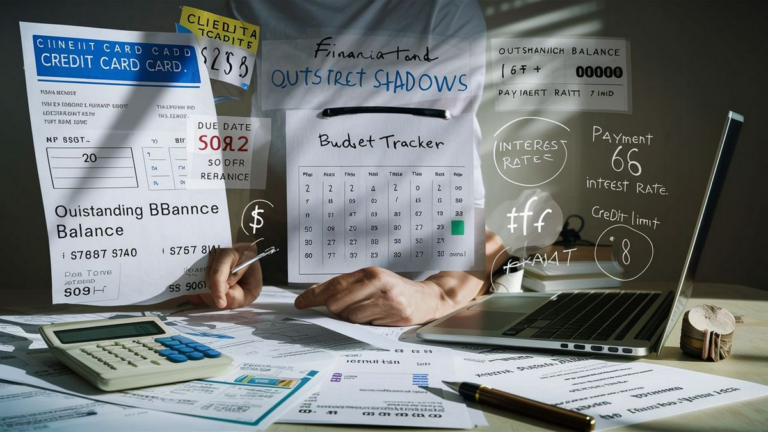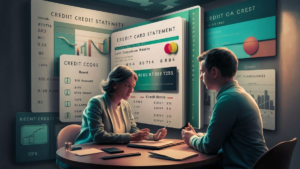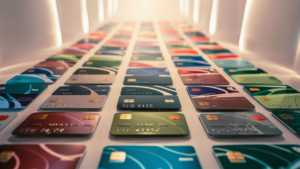In the realm of personal finance, the term “outstanding balance” holds significant importance, particularly in the context of credit cards. It refers to the total amount of money owed to the credit card issuer by the cardholder at any given point in time. To delve deeper into this concept, let us explore what constitutes an outstanding balance and how it impacts cardholders’ financial standing.
The Basics of Outstanding Balance
When a credit card is used for purchases or cash advances, the amount spent accumulates as a balance owed to the credit card company. This balance comprises both the principal amount borrowed and any applicable interest charges or fees.
Key Components of an Outstanding Balance
An outstanding balance typically consists of:
- The principal amount: This is the original sum borrowed through credit card transactions.
- Interest charges: Credit card companies levy interest on any unpaid balances, which adds to the outstanding amount.
- Fees: Additional charges such as annual fees, late payment fees, or balance transfer fees contribute to the outstanding balance.
Factors Influencing the Outstanding Balance
Several factors can affect the magnitude of the outstanding balance on a credit card:
- Usage pattern: The frequency and size of transactions made using the credit card impact the outstanding balance.
- Interest rate: Higher interest rates result in more significant interest charges on unpaid balances, leading to a larger outstanding balance.
- Payment behavior: Timely repayment reduces the outstanding balance, while missed or late payments increase it due to accruing interest and fees.
- Credit limit: The maximum amount that can be charged to the credit card affects the potential size of the outstanding balance.
Managing Outstanding Balances
Effectively managing outstanding balances is crucial for maintaining financial health:
- Regular monitoring: Keeping track of transactions and outstanding balances helps in budgeting and avoiding excessive debt.
- Timely payments: Paying the outstanding balance in full or at least making the minimum payment by the due date prevents the accumulation of interest and fees.
- Debt reduction strategies: Strategies like debt consolidation or balance transfers can be employed to reduce outstanding balances and lower overall interest costs.
Implications of High Outstanding Balances
High outstanding balances can have several negative consequences:
- Increased interest expenses: Higher balances result in more significant interest charges, potentially leading to long-term debt accumulation.
- Impact on credit score: Utilization of available credit, as reflected by outstanding balances, is a significant factor in credit scoring models.
- Financial stress: Excessive debt burdens can cause stress and hamper overall financial well-being.
In Summary
An outstanding balance on a credit card represents the total amount owed to the credit card issuer, comprising the principal amount borrowed, interest charges, and any applicable fees. It is influenced by various factors such as usage patterns, interest rates, payment behavior, and credit limits. Effective management of outstanding balances is essential for maintaining financial stability and avoiding adverse consequences.
Understanding Credit Utilization Ratio
One crucial aspect related to outstanding balances is the credit utilization ratio. This ratio represents the percentage of available credit that a borrower is currently using. It is calculated by dividing the total outstanding balances by the total credit limit across all credit accounts.
Importance of Credit Utilization
Credit utilization plays a significant role in determining creditworthiness. Lenders and credit scoring models consider this ratio when assessing an individual’s financial responsibility. A lower credit utilization ratio generally reflects positively on a borrower’s credit profile.
| Credit Card | Outstanding Balance | Credit Limit | Credit Utilization Ratio |
|---|---|---|---|
| Card A | $1,200 | $5,000 | 24% |
| Card B | $800 | $3,000 | 26.67% |
In the above example, Card A has a lower credit utilization ratio despite having a higher outstanding balance, indicating better credit management compared to Card B.
Frequently Asked Questions
- What is the ideal credit utilization ratio?
Ideally, individuals should aim to keep their credit utilization ratio below 30% to maintain a healthy credit score. - How often should I check my outstanding balance?
It’s advisable to monitor your outstanding balances regularly, preferably before the statement closing date, to ensure accuracy and avoid surprises. - Can high outstanding balances be negotiated with credit card companies?
In some cases, credit card companies may offer hardship programs or negotiate repayment terms for individuals facing financial difficulties due to high outstanding balances.
See also:






